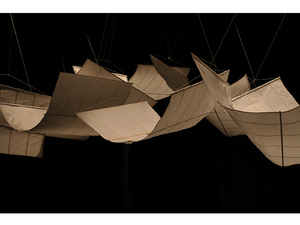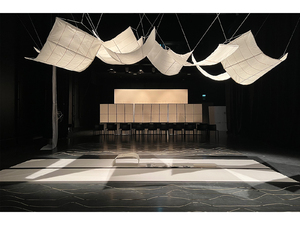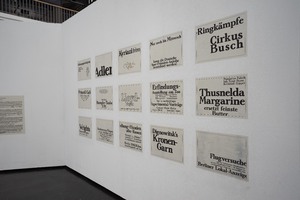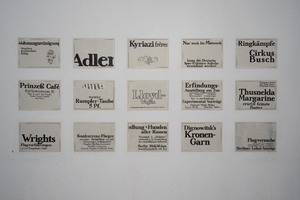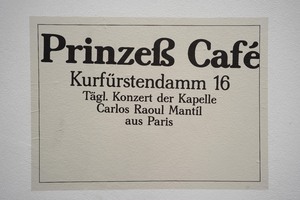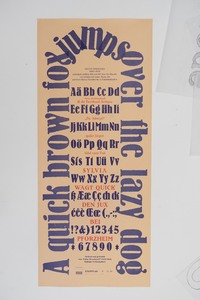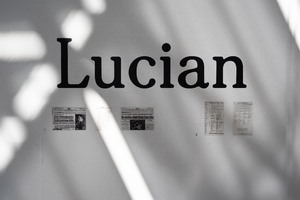"Websites der Fachbereiche"
| Begriff | Websites der Fachbereiche |
| Metakey | Freigabe Nutzung HfG (rights:usage_hfg) |
| Typ | Keyword |
| Vokabular | Rechte |
1710 Inhalte
- Seite 1 von 143
Endresultat "Die Inseln" 02
- Titel
- Endresultat "Die Inseln" 02
- Autor/in
- Kategorie
- Titel
- Endresultat "Die Inseln" 02
- Urheberrechtshinweis
- © Yinxuan Chen
- Rechtsschutz/Lizenz
- Freigabe Nutzung HfG
- Medienersteller/in
- Beziehung/Funktion
- Projektleiter/in
- Semester
- Studiengang
- Typ der Abschlussarbeit
- Importiert am
- 14.11.2024
- Übergeordnete Sets
- 1
Endresultat "Die Inseln" 01
- Titel
- Endresultat "Die Inseln" 01
- Autor/in
- Kategorie
- Titel
- Endresultat "Die Inseln" 01
- Urheberrechtshinweis
- © Yinxuan Chen
- Rechtsschutz/Lizenz
- Freigabe Nutzung HfG
- Medienersteller/in
- Beziehung/Funktion
- Projektleiter/in
- Semester
- Studiengang
- Typ der Abschlussarbeit
- Importiert am
- 14.11.2024
- Übergeordnete Sets
- 1
Emil
- Titel
- Emil
- Autor/in
- Kategorie
- Schlagworte
- Datierung
- 02.07.2025 - 11.07.2025
- Technik/Verfahren/Formate
- Typografie
- Titel
- Emil
- Titel (en)
- Emil
- Urheberrechtshinweis
- © Julian Jaffé
- Rechtsschutz/Lizenz
- Freigabe Nutzung HfG
- Medienersteller/in
- Beziehung/Funktion
- Medien-Beschreibung
- Ausstellungsansicht des Diplomprojekts "Emil".
- Medien-Beschreibung (en)
- Exhibition view of the diploma project "Emil".
- Projektleiter/in
- Semester
- Studiengang
- Typ der Abschlussarbeit
- Importiert am
- 30.06.2025
- Übergeordnete Sets
- 1
Emil
- Titel
- Emil
- Autor/in
- Kategorie
- Schlagworte
- Datierung
- 02.07.2025 - 11.07.2025
- Technik/Verfahren/Formate
- Typografie
- Titel
- Emil
- Titel (en)
- Emil
- Urheberrechtshinweis
- © Julian Jaffé
- Rechtsschutz/Lizenz
- Freigabe Nutzung HfG
- Medienersteller/in
- Beziehung/Funktion
- Medien-Beschreibung
- Ausstellungsansicht des Diplomprojekts "Emil".
- Medien-Beschreibung (en)
- Exhibition view of the diploma project "Emil".
- Projektleiter/in
- Semester
- Studiengang
- Typ der Abschlussarbeit
- Importiert am
- 30.06.2025
- Übergeordnete Sets
- 1
Emil
- Titel
- Emil
- Autor/in
- Kategorie
- Schlagworte
- Datierung
- 02.07.2025 - 11.07.2025
- Technik/Verfahren/Formate
- Typografie
- Titel
- Emil
- Titel (en)
- Emil
- Urheberrechtshinweis
- © Julian Jaffé
- Rechtsschutz/Lizenz
- Freigabe Nutzung HfG
- Medienersteller/in
- Beziehung/Funktion
- Medien-Beschreibung
- Ausstellungsansicht des Diplomprojekts "Emil".
- Medien-Beschreibung (en)
- Exhibition view of the diploma project "Emil".
- Projektleiter/in
- Semester
- Studiengang
- Typ der Abschlussarbeit
- Importiert am
- 30.06.2025
- Übergeordnete Sets
- 1
Emil
- Titel
- Emil
- Autor/in
- Kategorie
- Schlagworte
- Datierung
- 02.07.2025 - 11.07.2025
- Technik/Verfahren/Formate
- Typografie
- Titel
- Emil
- Titel (en)
- Emil
- Urheberrechtshinweis
- © Julian Jaffé
- Rechtsschutz/Lizenz
- Freigabe Nutzung HfG
- Medienersteller/in
- Beziehung/Funktion
- Medien-Beschreibung
- Ausstellungsansicht des Diplomprojekts "Emil".
- Medien-Beschreibung (en)
- Exhibition view of the diploma project "Emil".
- Projektleiter/in
- Semester
- Studiengang
- Typ der Abschlussarbeit
- Importiert am
- 30.06.2025
- Übergeordnete Sets
- 1
Emil
- Titel
- Emil
- Autor/in
- Kategorie
- Schlagworte
- Datierung
- 02.07.2025 - 11.07.2025
- Technik/Verfahren/Formate
- Typografie
- Titel
- Emil
- Titel (en)
- Emil
- Urheberrechtshinweis
- © Julian Jaffé
- Rechtsschutz/Lizenz
- Freigabe Nutzung HfG
- Medienersteller/in
- Beziehung/Funktion
- Medien-Beschreibung
- Ausstellungsansicht des Diplomprojekts "Emil".
- Medien-Beschreibung (en)
- Exhibition view of the diploma project "Emil".
- Projektleiter/in
- Semester
- Studiengang
- Typ der Abschlussarbeit
- Importiert am
- 30.06.2025
- Übergeordnete Sets
- 1
Emil
- Titel
- Emil
- Autor/in
- Kategorie
- Schlagworte
- Datierung
- 02.07.2025 - 11.07.2025
- Technik/Verfahren/Formate
- Typografie
- Titel
- Emil
- Titel (en)
- Emil
- Urheberrechtshinweis
- © Julian Jaffé
- Rechtsschutz/Lizenz
- Freigabe Nutzung HfG
- Medienersteller/in
- Beziehung/Funktion
- Medien-Beschreibung
- Ausstellungsansicht des Diplomprojekts "Emil".
- Medien-Beschreibung (en)
- Exhibition view of the diploma project "Emil".
- Projektleiter/in
- Semester
- Studiengang
- Typ der Abschlussarbeit
- Importiert am
- 30.06.2025
- Übergeordnete Sets
- 1
Emil
- Titel
- Emil
- Autor/in
- Kategorie
- Schlagworte
- Datierung
- 02.07.2025 - 11.07.2025
- Technik/Verfahren/Formate
- Typografie
- Titel
- Emil
- Titel (en)
- Emil
- Urheberrechtshinweis
- © Julian Jaffé
- Rechtsschutz/Lizenz
- Freigabe Nutzung HfG
- Medienersteller/in
- Beziehung/Funktion
- Medien-Beschreibung
- Ausstellungsansicht des Diplomprojekts "Emil".
- Medien-Beschreibung (en)
- Exhibition view of the diploma project "Emil".
- Projektleiter/in
- Semester
- Studiengang
- Typ der Abschlussarbeit
- Importiert am
- 29.06.2025
- Übergeordnete Sets
- 1
Emil
- Titel
- Emil
- Autor/in
- Kategorie
- Schlagworte
- Datierung
- 02.07.2025 - 11.07.2025
- Technik/Verfahren/Formate
- Typografie
- Titel
- Emil
- Titel (en)
- Emil
- Urheberrechtshinweis
- © Julian Jaffé
- Rechtsschutz/Lizenz
- Freigabe Nutzung HfG
- Medienersteller/in
- Beziehung/Funktion
- Medien-Beschreibung
- Ausstellungsansicht des Diplomprojekts "Emil".
- Medien-Beschreibung (en)
- Exhibition view of the diploma project "Emil".
- Projektleiter/in
- Semester
- Studiengang
- Typ der Abschlussarbeit
- Importiert am
- 30.06.2025
- Übergeordnete Sets
- 1
Emil
- Titel
- Emil
- Autor/in
- Kategorie
- Schlagworte
- Datierung
- 02.07.2025 - 11.07.2025
- Technik/Verfahren/Formate
- Typografie
- Titel
- Emil
- Titel (en)
- Emil
- Urheberrechtshinweis
- © Julian Jaffé
- Rechtsschutz/Lizenz
- Freigabe Nutzung HfG
- Medienersteller/in
- Beziehung/Funktion
- Medien-Beschreibung
- Ausstellungsansicht des Diplomprojekts "Emil".
- Medien-Beschreibung (en)
- Exhibition view of the diploma project "Emil".
- Projektleiter/in
- Semester
- Studiengang
- Typ der Abschlussarbeit
- Importiert am
- 30.06.2025
- Übergeordnete Sets
- 1
Emil
- Titel
- Emil
- Autor/in
- Kategorie
- Schlagworte
- Datierung
- 02.07.2025 - 11.07.2025
- Technik/Verfahren/Formate
- Typografie
- Titel
- Emil
- Titel (en)
- Emil
- Urheberrechtshinweis
- © Julian Jaffé
- Rechtsschutz/Lizenz
- Freigabe Nutzung HfG
- Medienersteller/in
- Beziehung/Funktion
- Medien-Beschreibung
- Ausstellungsansicht des Diplomprojekts "Emil".
- Medien-Beschreibung (en)
- Exhibition view of the diploma project "Emil".
- Projektleiter/in
- Semester
- Studiengang
- Typ der Abschlussarbeit
- Importiert am
- 30.06.2025
- Übergeordnete Sets
- 1
